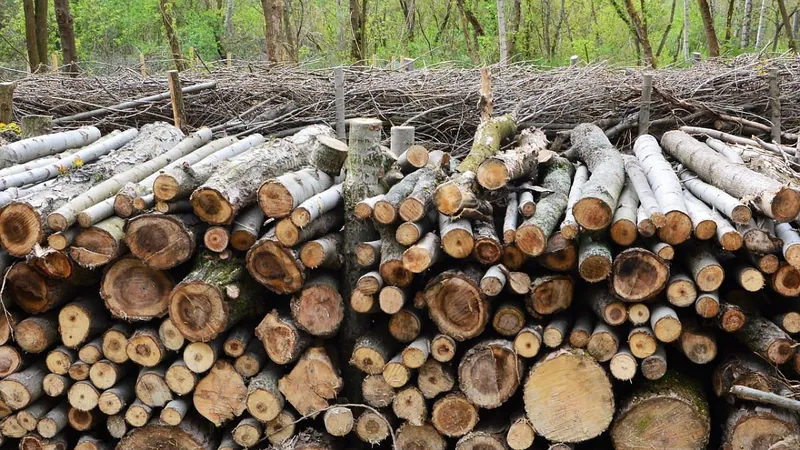
Tree ‘Burial’ Emerges as Groundbreaking Carbon Capture Strategy to Fulfill Paris Agreement Commitments, Reveals New Study
2024-09-28
Unveiling a Carbon Capture Strategy
In a fascinating revelation, researchers led by Ning Zeng from the University of Maryland's Department of Atmospheric and Oceanic Sciences have discovered that burying trees, particularly dead wood and agricultural waste, may hold the key to effective carbon capture. Their study was sparked by the discovery of a remarkably well-preserved log of eastern red cedar, carbon-dated to approximately 3,775 years old, buried six feet deep in clay soil in Saint-Pie, Quebec.
Remarkably, this ancient log had only lost about 5% of its carbon during its millennia-long burial, demonstrating the effectiveness of wood burial as a method for carbon removal and long-term storage. This finding supports the idea that burying biomass could effectively prevent the release of carbon dioxide—a significant contributor to climate change—back into the atmosphere, thus fulfilling part of the mandates outlined in the Paris Agreement.
How Wood Burial Works
The researchers propose that by burying dead wood and other organic materials in specially designed chambers, the decomposition process can be inhibited, allowing for carbon to be stored durably. As it stands, the natural decomposition of plant material contributes substantially to atmospheric carbon levels, releasing an estimated 220 gigatonnes of carbon dioxide annually. Incredibly, this is nearly six times the 37 gigatonnes emitted by fossil fuels each year. Zeng and his team argue that if even a small fraction—around 4.5%—of this captured carbon is prevented from re-entering the atmosphere, it could lead to a significant reduction of approximately 10 gigatonnes of carbon dioxide emissions each year. This reduction could dramatically offset fossil fuel emissions, highlighting the urgent need for innovative carbon sequestration techniques.
Cost-Effective Solutions on the Horizon
Market research suggests that implementing this wood burial technique could cost between $100-200 per tonne of carbon dioxide over the next decade. Furthermore, as the method scales, costs could decrease to as low as $30-100 per tonne within 20 years. This is a significant contrast to existing carbon capture technologies, such as direct air capture, which can cost up to $300 per tonne.
A Global Movement Towards Sustainability
The potential of wood burial as a carbon capture strategy may revolutionize how we address climate change, providing a dual benefit of environmental protection and economic revitalization for struggling communities. With further research required to refine the technique and its broader applicability, the future of carbon storage could rely on this ancient practice reborn for modern sustainability efforts.
This groundbreaking study presents a glimmer of hope in the battle against climate change, urging governments, industries, and communities worldwide to consider innovative approaches to carbon capture. Could wood burial be the secret weapon we’ve been waiting for in our climate crisis fight? The answer could shape our planet's future.




 Brasil (PT)
Brasil (PT)
 Canada (EN)
Canada (EN)
 Chile (ES)
Chile (ES)
 España (ES)
España (ES)
 France (FR)
France (FR)
 Hong Kong (EN)
Hong Kong (EN)
 Italia (IT)
Italia (IT)
 日本 (JA)
日本 (JA)
 Magyarország (HU)
Magyarország (HU)
 Norge (NO)
Norge (NO)
 Polska (PL)
Polska (PL)
 Schweiz (DE)
Schweiz (DE)
 Singapore (EN)
Singapore (EN)
 Sverige (SV)
Sverige (SV)
 Suomi (FI)
Suomi (FI)
 Türkiye (TR)
Türkiye (TR)